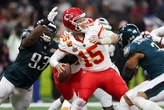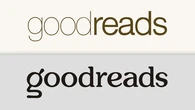Earlier this summer, Pepsi did something brands have been doing forever: It took a jab at its rival. In this case, that entailed some snarky satirizing of a popular Coke ad campaign. But it raised an eternal brand-battle question: Is it really a good idea to reference a rival so directly?
Under the right circumstances, yes, according to the latest research on that subject in a recent Journal of Marketing Research paper, coauthored by Johannes Berendt, a professor of economics and communication at Hannover University of Applied Sciences and Arts in Germany. His fellow co-authors are Sebastian Uhrich, a professor of sports business administration at the German Sport University Cologne; Abhishek Borah, an associate professor of marketing at INSEAD (Institut Européen d’Administration des Affaires) in France; and Gavin Kilduff, a professor of management and organizations at NYU Stern.
For starters, Berendt explains in an email, it’s important to distinguish between true rivalry and mere competition: Real rivals not only compete against each other in the marketplace, but they also have a “special competitive relationship based on a shared history,” he says. This includes McDonald’s vs. Burger King, Mercedes vs. BMW, Apple vs. Samsung, and, of course, Coke vs. Pepsi. Researchers call it the “rivalry reference effect.”
“Consumers know that this is more than just regular competition,” Berendt says. In their studies (which included analyses of 1.5 million social media posts from real brands, as well as controlled experiments involving fictional posts in various brand categories), Berendt and his fellow researchers found that a brand message referencing a rival increases consumer engagement—and can even impact purchase intent. “Openly contested rivalries have a special appeal,” Berendt adds. “Messages between rivals are processed differently than between ordinary competitors.” (Remember the chicken sandwich wars a couple of years back? It made sense that Popeye’s and Chick-fil-A would scrap on social media, but it felt off when Wendy’s butted in.)
Pepsi’s recent shot at its longtime nemesis’s “Share a Coke” campaign is a good example of a fresh salvo between true rivals. The Coke campaign, a Gen Z-focused iteration of a past effect, involves limited-edition packaging printed with individual names like “David” or “Mia.” Pepsi copied the style but smirked at the sentiment on packaging and billboards, replacing names with shout-outs to burgers, wings, and other Pepsi-friendly grub pairings. Share a Pepsi with, say, pizza, “not some bro,” goes one example, resonating with the soda’s “Food Deserves Pepsi” pitch.
That said, the specifics of any single critique may matter less than its context within a clearly established rivalry. “Between rivals, consumers instantly connect new episodes to a familiar, ongoing narrative,” Berendt says. “This is because rivalry has two central elements of exciting stories: familiar antagonists, such as Coke and Pepsi, and a classic plot, the recurring conflict.” For a consumer who has long since chosen sides, the message can be reinforcing, but Berendt says even “neutral” consumers seem to enjoy, or engage with, known rivalries.
Of course, there are limits. While deploying brand rivalry messages can play to feelings of consumer-group distinctiveness, it might risk implying an overly aggressive brand personality. But that’s generally not an issue “if a rival is attacked in a clever/humorous way,” Berendt says. A few years ago, for instance, Burger King took a jab at McDonald’s with its “Every King Needs a Clown” campaign in Germany. Occasionally, a rival-focused message can even take the high road, as when Mercedes’ CEO retired and BMW launched a spot thanking him for years of “inspiring competition.” The ad got 8.2 million views and lots of positive comments on YouTube, Berendt points out, suggesting that “this was a classy way to engage with the rival.”
Interestingly, the rivalry reference effect works whether it’s the category leader or the chief challenger calling out its brand enemy. The dynamic seems to be similar either way, playing to longtime loyalties or just widespread familiarity with a competitive history. It’s true, Berendt concedes, that social media teasing can escalate if fans get involved and go after each other—particularly in the context of sports. And sometimes a badly executed attack on a rival can just seem childish. But based on what Berendt and his colleagues found, there’s not as much risk as you might think. “If done in a clever way, most consumers seem to enjoy a good clash between rivals once in a while,” he says.








No comments